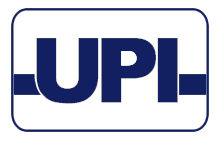Automated Content Security Policy Crucial For Web-Based Businesses

The security of the actual client-facing side of the business and user browsers are now top priority for businesses whose models center on the use of websites and webpages that require customer inputs.
For decades, the cybersecurity industry has emphasized the need to protect the server side, or back end of a business to ensure smooth IT operations and protect the overall integrity of the business and the data it stores.
However, for businesses whose models center on the use of websites and webpages that require customer inputs, it’s the actual client-facing side of the business and user browsers that are now top priority.
Chief Information Security Officers and Chief Security Officers at the basic level need to keep their businesses safe and clear of cybercriminals looking to take advantage both of client-side vulnerabilities and a traditional content security policy (CSP) that lacks necessary automation to provide proper protection, according to ecommercetimes.com.
You must continually monitor your business website’s security status for any needed changes or actions and train the staff on how to react and remediate issues that may suddenly spring up.
As it is impossible to monitor every new user or action on a website manually all the time, it is obvious that the client-side security for a large company’s webpages requires automation.
Today’s cybersecurity solutions, even for the server side of a business, use the power of AI, machine learning and various automated tasks to provide ongoing protection. Client-side security didn’t previously enjoy that same level of innovation until recently whereas the media keep on reporting about stolen user information.
The content security policies adopted by web-based businesses are very often considered by IT personnel as a general one-time step that’s simply taken to add basic levels of security to a website. Experts argue that it is not that simple at all.
You can employ a CSP as a dynamic tool, but you must also systematically audit it to see which policies work and which do not. It must also continue working flawlessly if new plugins are added, etc.
Front-end systems often use many thousands of scripts gathered from numerous third-, fourth- or even fifth-party sources and that is why they can’t be instantly trusted. That is another reason why automated systems are necessary.
Unsafe scripts are one of the major items a CSP identifies. These scripts can enable cybercriminals successfully conduct point-of-sale (POS) skimming attacks, which are gaining in popularity, as well as other types of similar attacks such as cross-site scripting (XSS) and JavaScript injection attacks, experts say.
When third-party scripts change or new marketing trackers or plugins are used, there is an opportunity for attacks. CSPs should make it easier to track CSP violations, initiate corrections, and help staff adjust policies. If the script should not access certain resources and it tries to do so, red flags appear and attacks can be prevented in the future.
By continually browsing a website and acting like a real user, an automated CSP approach can effectively evaluate scripts, data and what they’re doing preventing problems in time.
Unlike the nearly impossible task of manually managing a large-scale CSP, an automated approach can enable an initial scan, policy creation, emulation testing, policy enforcement, violation reporting and policy tuning to take place in in moments instead of months or longer.
This greatly simplified management and monitoring of a CSP creates a far more robust security posture for the client-side of a business.
Throughout the tailored CSP creation, day-to-day management and real-time policy optimization, a company’s IT personnel address this growing client-side threat and free themselves to assist with their core business issues. At the same time they also help to maintain a superior customer experience with total security, which can be the company’s competitive advantage.


Latest News